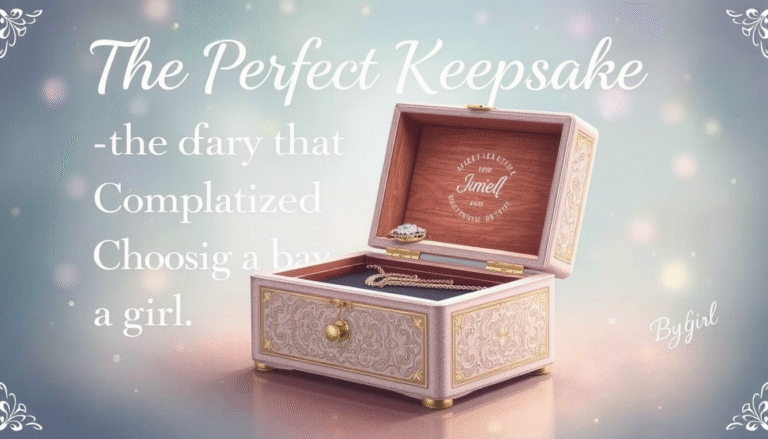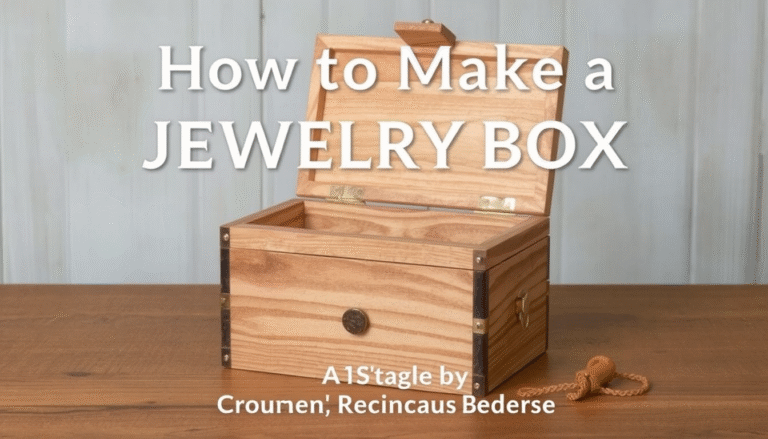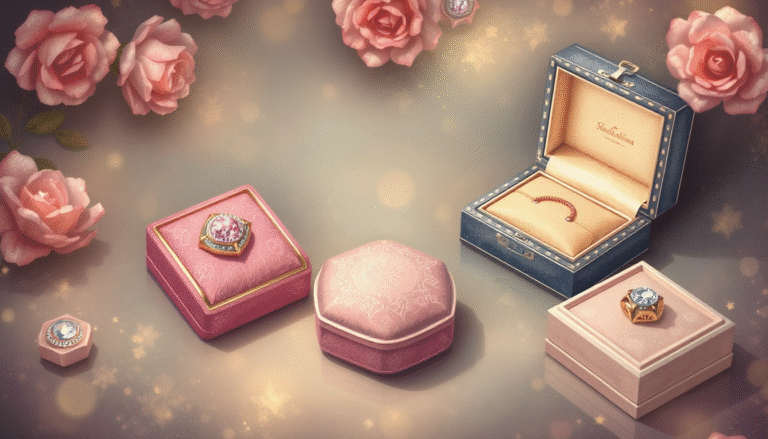This guide does more than talk about simple storage. It shows why a jewelry box is an essential investment that preserves your treasures, helps you organize them, and creates a special personal ritual.
We’ll examine how the right box doesn’t just protect your jewelry and valuables but also serves your daily routine better. The box on the right transforms a desperate search into a moment of tranquil delight.
The Foundation of Protection: Why Every Jewelry Collection Deserves a Proper Home
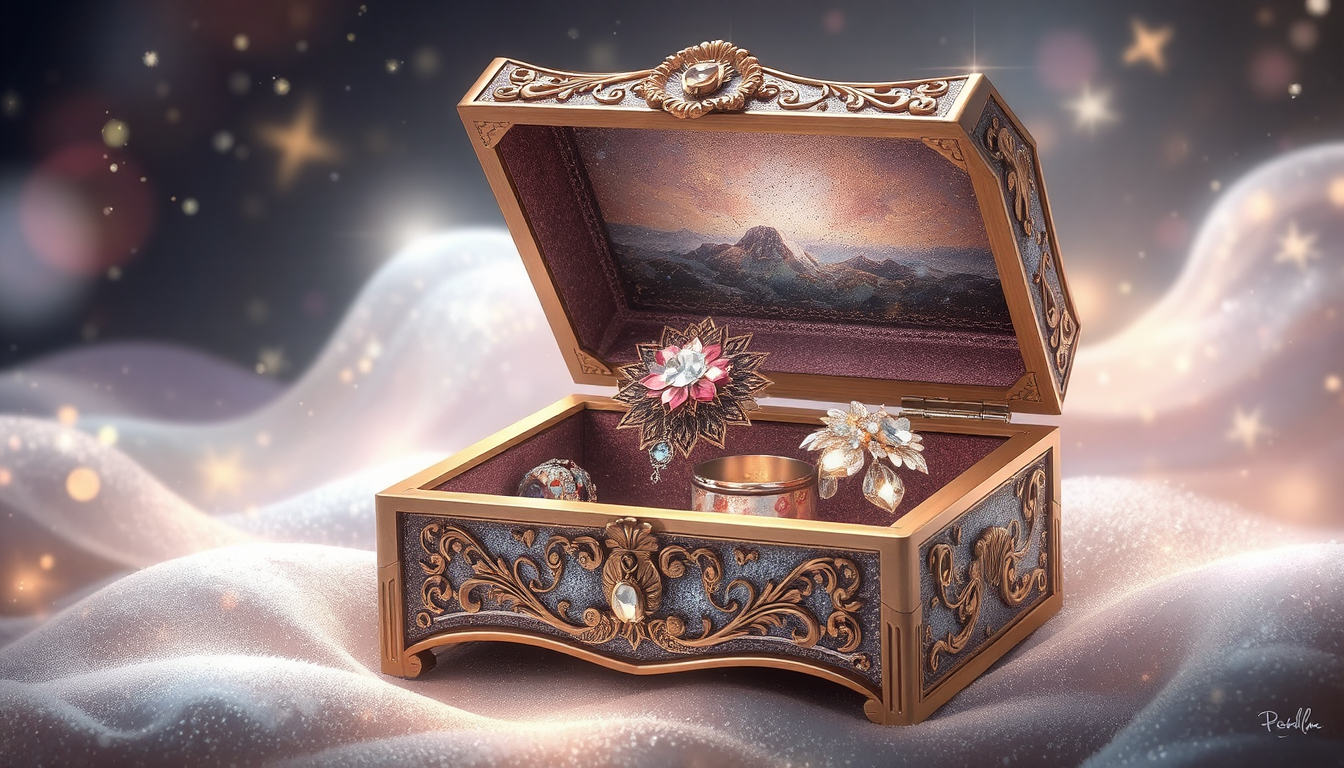
Before we look at styles and materials, we need to understand what a jewelry box is really for. Its main job is to protect your collection by providing a safe environment that stops common damage.
Preventing Damage and Tarnish
When you leave jewelry out, you take the risk of damaging it, every time. Knots can make chains snarl together in a way that would seem impossible to undo. Fragile pendants may get scratched by harder stones. The only way to stop it – is by giving every single item it’s own space.
In addition, air and moisture lead to tarnish, especially in sterling silver. However, good jewelry boxes have special linings that help ward off this issue. However, some high end fabrics, such as LusterLoc™ have anti-tarnish components which can prevent oxidization for even decades, so that with these products it is possible to keep silver bright and valuable to wear.
The Ease of Organization
Just think how annoying it is to look for a lost earring. Or getting your beloved necklace undone in five minutes. This tiny bit of chaos in the morning can make you feel scattered and it’s forever stealing your joy of putting on your jewelry.
Now imagine cracking open a well-designed box instead. Everything is at a glance and easy to access in its own designated space. This organisation can make your day that little bit easier and bit more manageable.
A Symbol of Value and Ritual
It’s nice to give your favorite items a beautiful home. It demonstrates that these pieces have meaning that transcends their cash value — they are keepsakes, instilled with family stories, and the touchstones of significant moments in your life.
Even procuring jewelry out of its box becomes an exercise in mindfulness. It allows you a peaceful pause to appreciate beauty, reflect on cherished memories and find one that fits the way you feel today.
A Spectrum of Style and Function: Understanding the Types of Jewelry Boxes

There are all sorts of jewelry boxes in the market. The types are aimed at different collectors and lifestyles. It is important to know that we have several options is the first step in finding the best one for your needs.
From big armoires to little travel cases, the shape of the box has to reflect how you are going to use it.”
We’ve broken down the most popular styles here to help make it easier to find the perfect fit for your collection.
| Type of Jewelry Box | Best For | Key Features |
| Classic Tabletop Box | The everyday user with a varied collection. | Often features a hinged lid with a mirror, multiple compartments, dedicated ring rolls, and small drawers for bracelets and brooches. A versatile workhorse. |
| Jewelry Armoire | The serious collector with an extensive collection. | A free-standing piece of furniture with numerous stacked drawers, felt-lined compartments, and swing-out side doors with hooks for hanging dozens of necklaces. |
| Travel Case / Roll | The frequent traveler or for keeping essentials in a gym bag. | Highly compact and lightweight, with secure closures like zippers or snaps. The interior is soft and padded, with specialized loops and pouches to prevent movement. |
| Wall-Mounted Organizer | Those with limited surface space and a love for displaying pieces. | Hangs on a wall or over a door. Often features a grid or mesh for earrings, numerous hooks for necklaces, and small shelves for other items, turning jewelry into wall art. |
| Modular / Stackable Trays | The growing collector who values customization. | Individual trays (from brands like Stackers) with different layouts that can be purchased over time and stacked to create a personalized box that evolves with your collection. |
Assess Your Collection: A Personalized Guide to Choosing the Perfect Jewelry Box
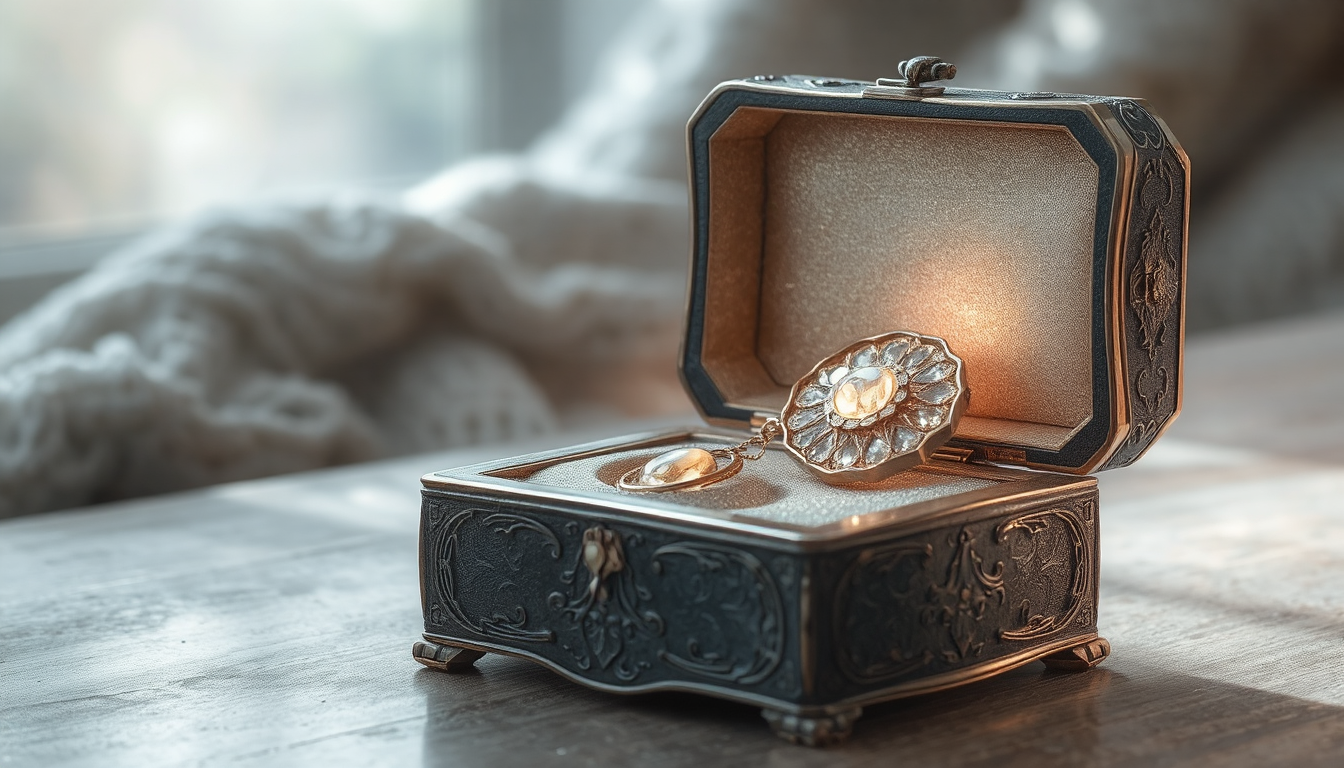
Before you shop, take time for an honest look at what you own. The most common mistake is buying a jewelry box just because it looks nice, only to find it doesn’t work for your actual collection. A beautiful box that doesn’t fit your jewelry becomes just another form of clutter.
Use this checklist to do a “jewelry inventory.” This simple process will create a personal blueprint to make sure your choice is both beautiful and perfectly functional.
Step 1: Conduct a “Jewelry Inventory”
-
What do you own most of? Are you a ring fan, a necklace lover, or a earring collector? You can let the dominant type in your collection largely determine the inside configuration of the box. If you have lots of rings, you need lots of ring rolls. No matter how you store earrings, you need some grids or multi-slotted compartments.
-
Do you have many chunky or delicate pieces? Deep, open drawers will keep statement necklaces and thick bracelets in check. Delicate chains require their own hooks or narrow channels to drape across, so that they avoid tangling when they are stored next to each other. Expert Tip: A lot of people purchase a box that has necklace hooks that are too short and allows long pendants to bunch up at the bottom — try not to succumb to the same strife! Always consider the length of your longest piece.
-
How many pieces do you have? Be honest about the size of your current collection and about your own habits. If you like to buy new items frequently, select a box with at least 25% more capacity for growth. Modular systems are ideal for when you plan to grow your collection.
Step 2: Consider Your Materials
-
Do you own a lot of sterling silver? If yes, an anti-tarnish lining is not a luxury—it’s a must-have. It will save you many hours of polishing and keep your silver looking good.
-
Do you have valuable fine jewelry? For collections with high-value items or irreplaceable family heirlooms, a box with a secure lock and key gives you peace of mind against theft or curious children.
-
Do you have pearls or soft stones? Pearls, opals, and turquoise are easily scratched. Ensure the box’s lining is soft, such as velvet, microsuede or silk. Stay away from coarser materials that can scratch delicate surfaces after multiple uses.
Step 3: Evaluate Your Lifestyle and Space
-
Where will the box live? Don’t let yourself fall in love with a massive armoire until you measure your vanity, dresser or closet shelf. Ensure that your selected box sits loosely and comfortably in space drive around in it, push on it and rotate it. Wall-mounted or stackable alternatives may be more practical for those in smaller homes.
-
How often do you travel? If you travel frequently, you might want to opt for a “system” approach. Buy a nice, substantial jewelry box for home and a smaller, matching case for your travels. Now you have your pieces safe at your side wherever you travel.
The Soul of the Box: Understanding Materials and Craftsmanship
The materials used to make a jewelry box determine how long it will last, how well it protects your jewelry, and how beautiful it looks. Recognizing quality goes beyond appearance; it means understanding how different materials and construction methods affect the final product.
-
Wood: Wood is the traditional classic. Hardwoods such as walnut, cherry, oak and mahogany are able to last a lifetime and only get more beautiful as they age. The very best wooden boxes have perfectly aligned, matt joins and a heavy feel. A handsome wooden (or other substance) box is a lot more than a container – it’s a family heirloom.
-
Leather & Faux Leather: Genuine and imitation leathers provide a modern look. Top-grain leather is high quality and feels extremely durable, and it will create a beautiful patina over time. Contemporary vegan leathers offer a premium, cruelty-free alternative and they have good resistance to wear and moisture.
-
Velvet, Suede, and Silk Linings: The interior of the jewelry box or travel case is the first line of defense for your jewelry. These plush, silky materials protect polished metal surfaces and soft gemstone. It’s also a good indicator of the general workmanship of the box.
-
Specialty Features: It’s all in the details. It’s a mark of quality workmanship if a piece has tight, working hinges, drawers that slide smoothly, and metal hardware that a designer took the time to get right. Those things will keep the box functioning well for years.
A Vessel for Memories: The History and Sentimental Value of the Jewelry Box
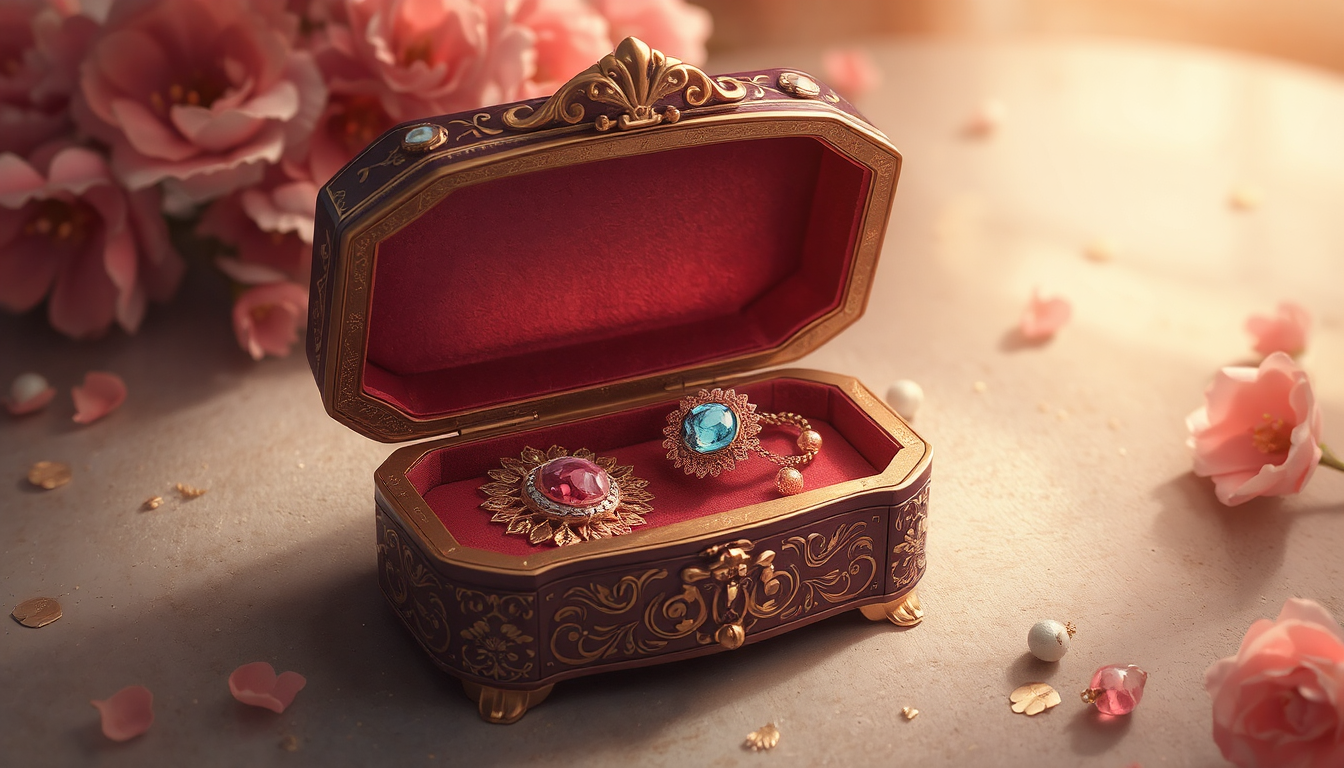
A jewelry box is more than a functional object. It holds stories and connects us to the past. These personal treasure chests have a rich visual history, from ornate chests in ancient Egypt designed to hold valuables for the afterlife to detailed Victorian boxes that showed status and romance.
For so many people, getting a jewelry box — a place to collect, protect and treasure one’s jewelry — is a meaningful passage. It’s in honor of a big birthday, graduation or personal achievement. The box is itself becoming a repository not just of valuable metals and stones, but of memories, accomplishments, personal identity.
The rings belonging to your grandmother, the necklace a first love gave you, the earrings a ex-bought for you when you decided to get your ears pierced, the watch you received as a wedding present. This way, the box itself can be an heirloom, passed through generations, silently collecting and preserving the stories of those who owned it.
The Art of Arrangement: Tips for Organizing and Maintaining Your Jewelry Box
And when you have the right box, organizing it well can be essential to making it useful. A smart setup will protect your pieces, and make your daily routine easier.
-
Group Like with Like: First, group your jewelry of the same type together: rings, earrings, necklaces, bracelets, etc. This is also the simplest and most effective first step.
-
Use the “High-Frequency” Zone: Your top tray or the section immediately under the lid should become a resting place for items in high rotation.
-
One Piece Per Slot: For no more tangled jewelry, each individual hook or slot from the 40 available to place them in Holders or hooks to hang jewelry, such as necklaces and bracelets so they dot get tangled up. This teeny step will save you so much anger.
-
Regular Clean-Out: This may not be a popular one, but every six months dedicate a bit of time to looking through your collection. Before storing pieces, give everything a good clean, look out for pieces that need repairing, and ensure everything is in its correct place.
-
Care for the Box Itself: Keep the outside of your box in good shape. Wipe wooden boxes clean with a soft, dry cloth. For leather items, apply a moderate amount of leather conditioner once or twice a year to maintain its softness.
Conclusion: Your Personal Treasure Chest
Choosing a jewelry box is a deeply personal decision. It’s an investment in the longevity of your treasures, a powerful tool for daily order, and a beautiful object that reflects your unique style. By assessing your collection, understanding the materials, and selecting carefully, you create more than just a storage solution—you create a true treasure chest that will protect and present your memories for years to come.
FAQ
1. What are the benefits of investing in a jewelry box in 2025?
A jewelry box shields your precious items from scuffs, dust and damage while storing them in one convenient spot, so you can always find the one you want, and a beautiful jewelry organizer is the catalyst that makes this important role an actual joy.
2. How do I choose the right type of jewelry box for my collection?
Take a jewelry inventory to determine what types of pieces you have the most of (rings, necklaces, earrings), evaluate your storage needs, and consider a style (tabletop box, armoire, travel case) that suits your lifestyle.
3. What materials make the best quality jewelry box in 2025?
The best jewelry boxes are made from fine woods such as walnut or cherry, plus top-quality leather (real or faux), a soft interior lining (velvet, suede, or silk), and sturdy hardware with smooth-operating drawers and hinges.
4. Do jewelry boxes with anti-tarnish linings really work?
Yes, newer jewelery boxes with anti-tarnish linings like LusterLoc™ are made with materials that will prevent silver from tarnishing for decades, meaning you will have to polish much less and keep your pieces ready for wear.
5. How should I organize my jewelry inside a jewelry box?
Keep items similar to each other, store items you wear often in easy to reach places, use smaller compartments for fragile pieces so they don’t tangle, clean your box twice a year and keep the box itself in good condition.


